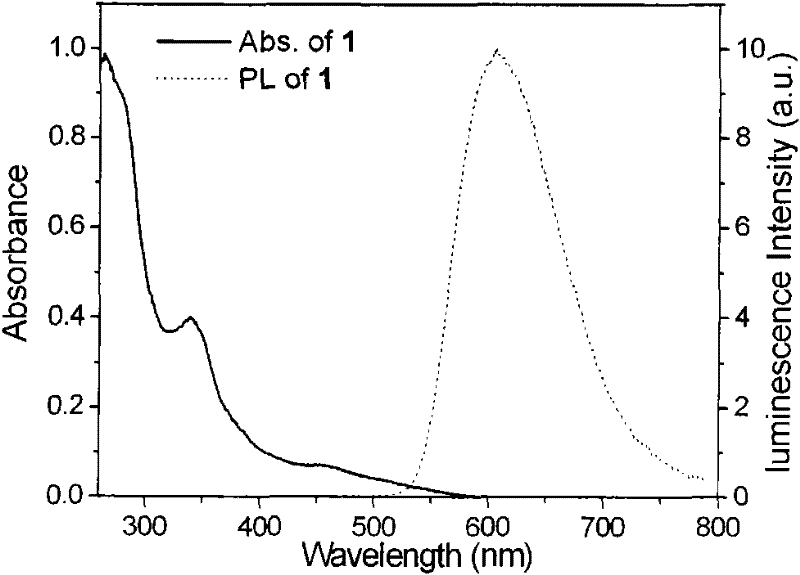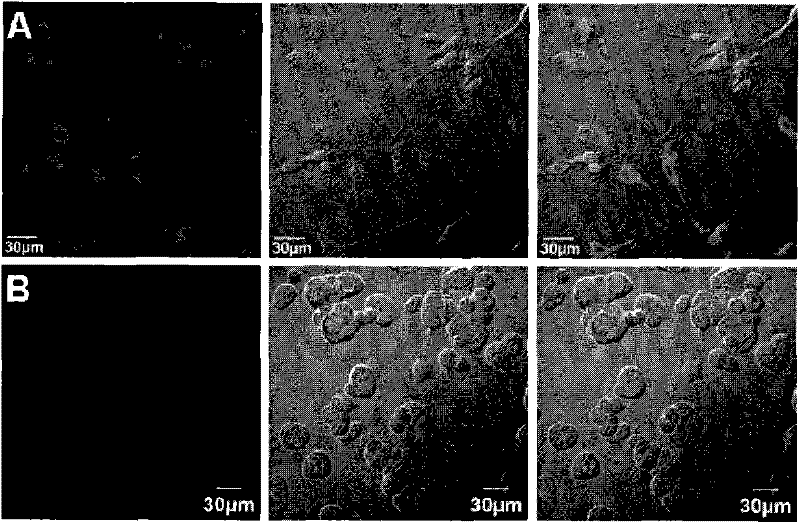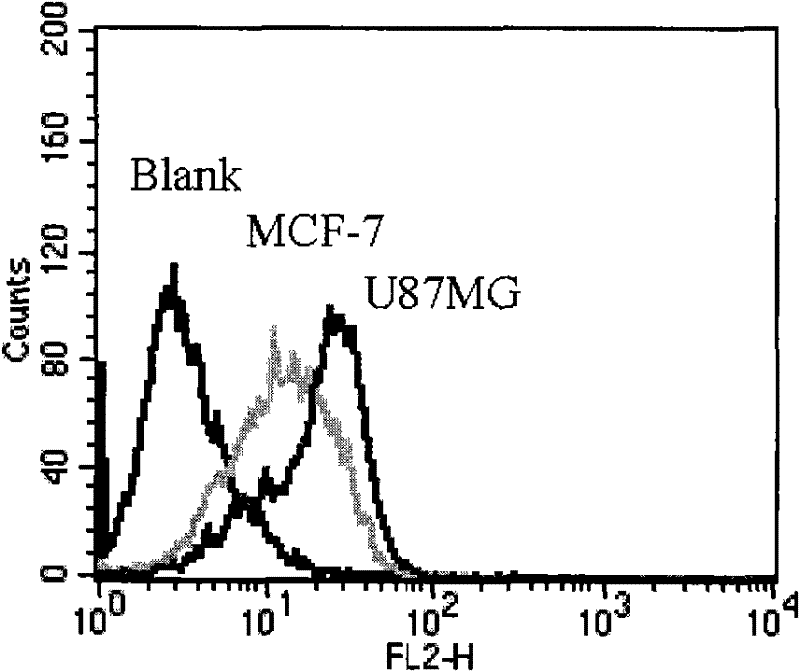Phosphorescent iridium complex capable of targeting tumor cell
A phosphorescent iridium complex, tumor cell technology, applied in fluorescence/phosphorescence, biochemical equipment and methods, microbial assay/inspection, etc., to achieve the effect of simple connection method and high photostability
- Summary
- Abstract
- Description
- Claims
- Application Information
AI Technical Summary
Problems solved by technology
Method used
Image
Examples
Embodiment 1
[0015] Embodiment 1: the preparation of iridium complex: iridium dichloro bridge complex (pq) 2 Ir(μ-Cl) 2 Ir(pq) 2 Prepared according to literature (see literature Nonoyama, K. Bull. Chem. Soc. Jpn. 1974, 47, 467-468.). Weigh IrCl 3 ·3H 2 O (5.52mmol) and the corresponding cyclometalated C^N ligand 2-phenylquinoline (11.04mmol) were added to the double-neck flask, and the mixture of 2-ethoxyethanol and water was injected with a syringe under nitrogen protection (3:1, v / v), the reaction mixture was heated to 110° C., stirred for about 24 hours, and a precipitate formed. After the reaction was stopped, the reaction mixture was cooled to room temperature, and a precipitate was obtained by filtration. The resulting precipitate was washed with water and ethanol respectively to obtain a red solid iridium dichloro bridge complex (pq) 2 Ir(μ-Cl) 2 Ir(pq) 2 . Weigh the iridium dichloro bridge complex and RGD peptide ligand with a molar ratio of 1:4 and add them into a double-...
Embodiment 2
[0016] Example 2: UV-Vis absorption spectrum and phosphorescence spectrum test of the complex
[0017] The absorption and emission spectra of the complexes were measured in DMSO / MEM (1:200, v / v) solution. The complex has a strong absorption band at 280-400nm in the ultraviolet region, which can be attributed to the π-π * transition ( 1 LC's contribution. The moderately intense absorption band at 400–500 nm can be attributed to the spin-allowed charge transfer from the metal to the ligand ( 1 MLCT) transition (dπ(Ir)→π * ). In addition, a weaker absorption peak is observed above 500 nm, which can be attributed to the spin-forbidden 3 MLCT and 3 LC transition. In DMSO / MEM=1:200, the complexes all have strong emission at room temperature, and the emission wavelength is located at 610nm. The emission peak appears to be a featureless broadband emission, indicating that the emission is mainly from 3 MLCT excited state (see attached figure 1 )
Embodiment 3
[0018] Example 3: The tumor cell imaging experiment of the complex
[0019] 1. MCF-7 (human breast cancer, integrin α v beta 3 low expression) and U87MG (human glioma, integrin α v beta 3 High expression) cell line (purchased from Shanghai Cell Bank, Chinese Academy of Sciences). MCF-7 cells were grown in MEM medium containing 10% FBS (fetal bovine serum) and 1% insulin (10 mL: 400 U), while U87MG cells were grown in MEM medium containing 10% FBS. Conditions during culture: 37°C, 5% CO 2 , saturated humidity. Replace the culture medium every two days, and subculture every 3 to 4 days.
[0020] 2. Spread the coverslips on a Ф35mm petri dish in a 1×10 5 Cells / mL seeded, 37°C, 5% CO 2 , placed in an incubator for cultivation. After the cells adhered to the wall, they were washed three times with phosphate buffered saline (PBS), and the complex solution with a final concentration of 2 μM was added to incubate at room temperature for 15 minutes, then the solution was aspir...
PUM
 Login to View More
Login to View More Abstract
Description
Claims
Application Information
 Login to View More
Login to View More - R&D
- Intellectual Property
- Life Sciences
- Materials
- Tech Scout
- Unparalleled Data Quality
- Higher Quality Content
- 60% Fewer Hallucinations
Browse by: Latest US Patents, China's latest patents, Technical Efficacy Thesaurus, Application Domain, Technology Topic, Popular Technical Reports.
© 2025 PatSnap. All rights reserved.Legal|Privacy policy|Modern Slavery Act Transparency Statement|Sitemap|About US| Contact US: help@patsnap.com



